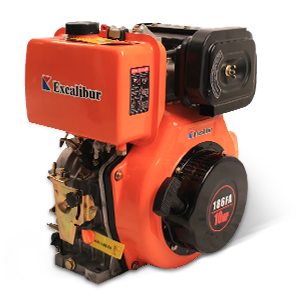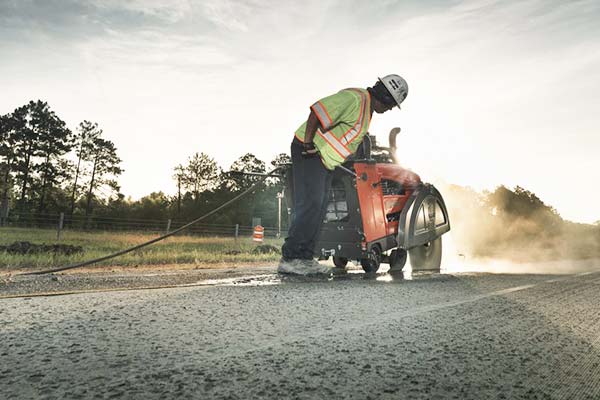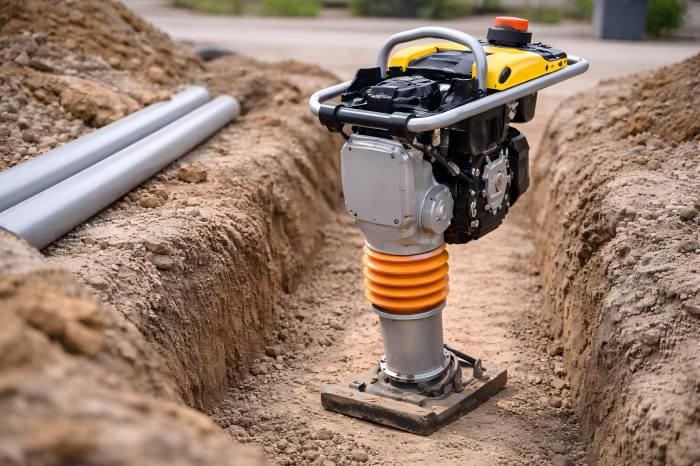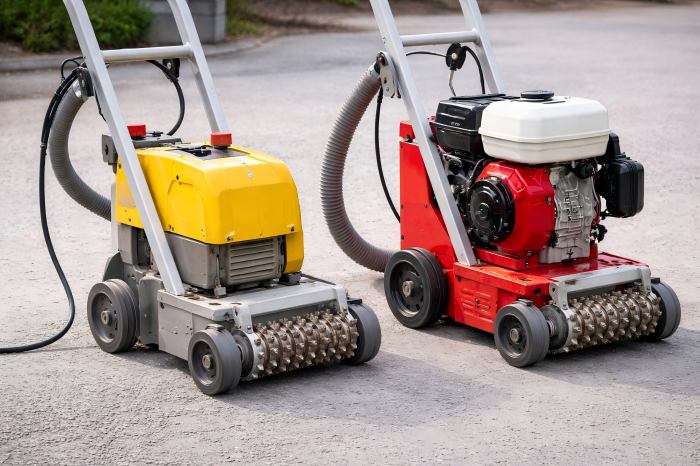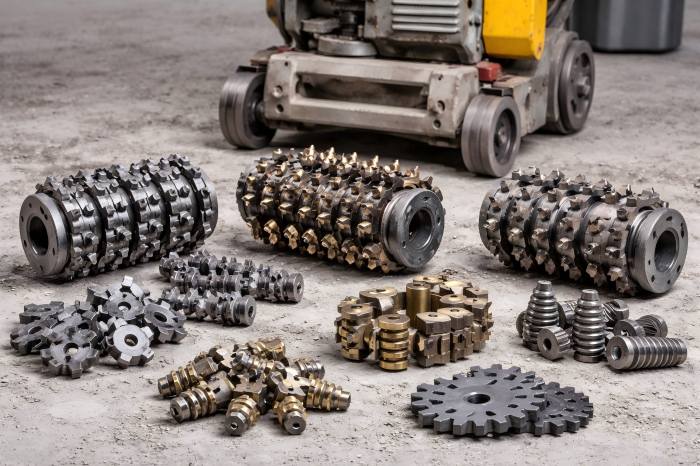Walk-behind concrete saws are indispensable tools for contractors handling concrete, asphalt, and masonry cutting. They’re built for performance, precision, and endurance. But like any construction equipment, they can develop issues over time—especially if subjected to demanding environments without proper maintenance.
Symptoms of Poor Cutting Performance
Before jumping to conclusions, start by identifying the exact symptom. Poor cutting can manifest in different ways:
- Shallow or inconsistent cutting depth
- Blade overheating or surface glazing issues
- Severe vibration or unstable saw movement
- Slow cutting speed
- Chipped, broken, or cracked blade
- Burn marks or scorched surfaces
- Premature blade wear
Each of these symptoms can stem from a range of mechanical, environmental, or operational issues. Let’s examine them in detail.
Common Causes and Solutions
Here’s a comprehensive table summarizing the most frequent issues, causes, and suggested corrective actions:
| Issue | Possible Cause | Recommended Fix |
| Blade not cutting deep enough | Worn blade or wrong diameter | Replace blade with correct size |
| Uneven cutting | Misaligned blade or bent arbor | Inspect and adjust alignment or replace arbor |
| Blade glazing (shiny surface) | Incorrect blade bond for material | Use softer bond blade for hard materials |
| Overheating blade | Insufficient water flow (wet cutting) | Check water pump, hose, or nozzle blockages |
| Slow cutting speed | Dull blade or underpowered motor | Sharpen or replace blade; inspect engine |
| Excessive vibration | Loose bearings or worn arbor shaft | Tighten/replace bearings; inspect shaft |
| Cracked blade segments | Forcing the cut or cutting too fast | Slow feed rate; allow blade to do the work |
| Burn marks on cut surface | Dry cutting with improper technique | Use segmented blade and pulse the cut |
| Blade wobble | Worn blade flanges | Replace flanges and check for flatness |
| Poor performance in reinforced concrete | Inappropriate blade type | Use diamond blade rated for rebar |
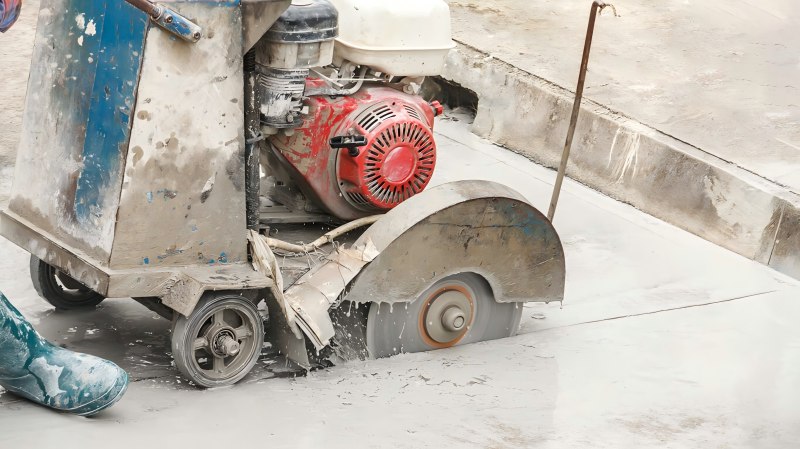
Detailed Troubleshooting by Category
Blade Issues
The blade is the heart of your cutting operation. Even the most powerful saw can underperform if the blade is wrong for the job.
Problem 1: The Saw Is Cutting Slowly or Not at All
Cause: Blade is dull, glazed, or too hard for the material.
Fix: Switch to a softer bond blade for harder materials like cured concrete. Sharpen the blade by cutting through an abrasive block like cinder block.
Problem 2: Blade Wobbles or Vibrates
Cause: Damaged core, uneven flanges, or poor mounting.
Fix: Remove and inspect the blade. Replace the blade flanges if they are warped. Make sure the blade is tightly mounted and the arbor is in good condition without any damage.
Problem 3: Blade Is Overheating
Cause: Inadequate water flow in wet cutting or improper dry cutting technique.
Fix: Clean the water nozzles. Ensure the water tank or hose delivers consistent flow. For dry cutting, reduce cutting time per pass and let the blade cool intermittently.
Saw Alignment and Setup
Even if the blade is fine, a poorly calibrated saw will undercut your performance.
Problem 4: Uneven Cutting Depth
Cause: Blade misalignment or chassis imbalance.
Fix: Use a straight-edge and caliper to check alignment. Adjust the blade mount, tracking system, or depth guide wheels.
Problem 5: Saw Pulls to One Side
Cause: Uneven tire pressure, bent frame, or misaligned blade.
Fix: Inspect the frame and wheels for damage. Ensure both wheels have equal contact with the surface.
Power System and Drive Components
The motor and belt drive system must deliver enough torque to maintain blade speed under load.
Problem 6: Blade Loses Speed Mid-Cut
Cause: Worn or slipping belt, low engine power, or carburetor issues.
Fix: Check the drive belt tension and inspect for wear. For gas saws, clean or rebuild the carburetor and replace air filters.
Problem 7: Sudden Loss of Power
Cause: Dirty fuel, faulty spark plug, clogged exhaust, or overheating engine.
Fix: Clean the fuel system and change the spark plug. Make sure ventilation is adequate and engine oil is at the right level.
Environmental and Operational Factors
Sometimes the issue isn’t the saw—it’s how or where it’s used.
Problem 8: Cutting Dust Instead of Concrete (Dry Cutting)
Cause: Blade is too hard or being used on wrong material.
Fix: Switch to a blade rated for the specific concrete type. Ensure segment design supports dry applications.
Problem 9: Excessive Slurry Mess (Wet Cutting)
Cause: Poor water flow management or improper blade.
Fix: Regulate water pressure and use wet-rated diamond blades. Channel slurry away using vacuums or containment methods.
Problem 10: Blade Segment Cracking
Cause: Cutting too aggressively or dropping the saw into the cut.
Fix: Start cuts gently, let the blade reach full speed before contact, and reduce feed pressure.
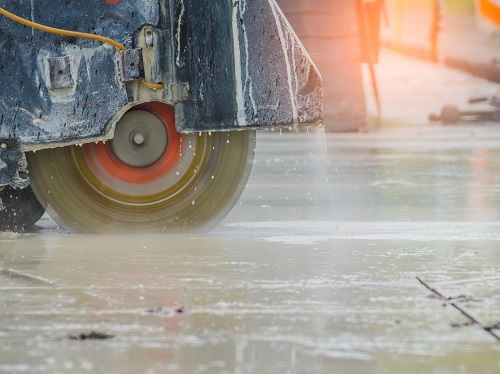
Maintenance Best Practices to Prevent Cutting Issues
To minimize downtime and ensure peak performance, implement a proactive maintenance schedule:
Daily Checks:
- Inspect the blade for cracks, warping, or uneven wear
- Check water supply or dust control attachments
- Ensure drive belts are tensioned and intact
- Clean air filters and remove surface debris
Weekly Tasks:
- Lubricate moving parts and check wheel bearings
- Inspect blade flanges for warping
- Verify engine spark and fuel quality
- Flush water lines or vacuum hoses
Monthly Service:
- Replace worn-out blades and belts
- Clean the carburetor or inspect the electric motor
- Calibrate the depth guide and adjust chassis alignment
Choosing the Right Blade for the Right Material
Not all concrete is the same. Your blade must match the job material to avoid cutting issues.
| Material | Recommended Blade Type |
| Cured Concrete | Soft-bond diamond blade |
| Green Concrete | Hard-bond diamond blade |
| Asphalt | Segmented diamond blade for abrasive materials |
| Reinforced Concrete | High-performance blade with deep gullets |
| Brick/Pavers | Turbo rim blade or masonry blade |
When to Replace a Blade
Continuing to use a worn or cracked blade is both inefficient and dangerous. Replace the blade when:
- Segment height is below manufacturer minimum
- Core shows signs of cracking
- You observe persistent wobble or spark formation
- Blade is overheating frequently
- Cutting speed is significantly reduced
Troubleshooting Flowchart
Start with the Blade
→ Is it sharp? Properly bonded? Mounted correctly?
Check the Saw Setup
→ Alignment, blade flanges, depth guide calibrated?
Inspect Power Source
→ Engine/motor running consistently? Belts intact?
Review Operating Conditions
→ Using correct method (wet/dry)? Cutting correct material?
Assess User Technique
→ Are operators feeding too fast? Forcing cuts? Starting correctly?
A walk-behind concrete saw that isn’t cutting properly is more than a nuisance—it’s a productivity killer and safety risk. Most issues stem from blade selection, setup misalignment, power delivery problems, or improper technique. Fortunately, the majority of these issues are easy to diagnose and prevent with regular maintenance, blade care, and proper operator training.
As a trusted manufacturer of walk-behind saws, we recommend using our certified blades and OEM parts to maintain machine integrity. Our models are designed with durability, ergonomics, and precision in mind—helping professionals deliver perfect cuts every time.

